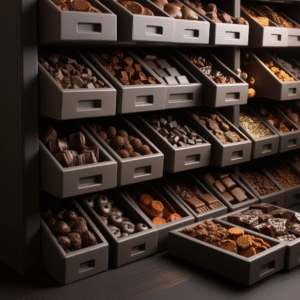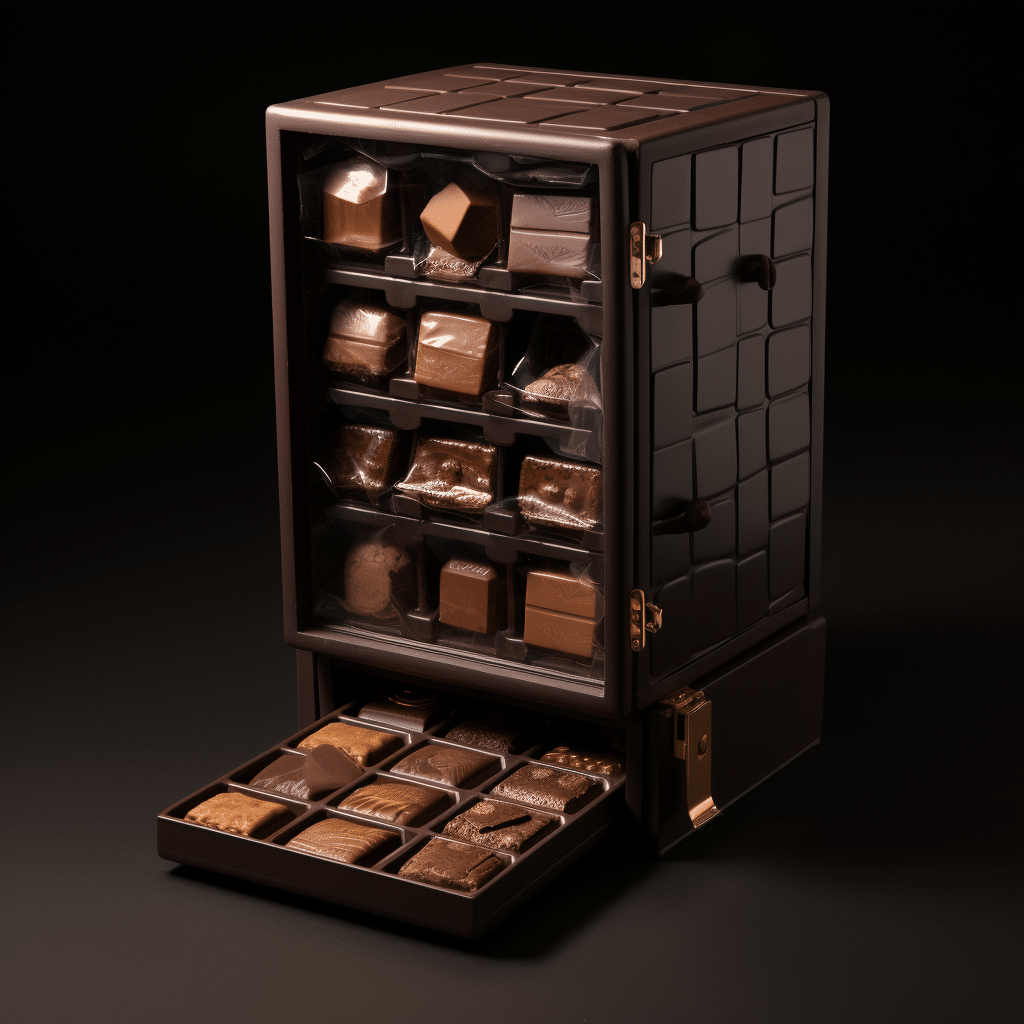How Long Does Chocolate Last? Storage Tips
Chocolate is one of the most consumed snacks in the world, with July 10th being a world chocolate day and Americans celebrating the national chocolate day on October 28th. More often than not, we buy chocolate for immediate consumption or a quantity that we can finish in a few days. So, what happens when you have more than enough chocolates? You will need to store them for a future date.

How Long Does Chocolate Last?
Chocolate, like any other food item, does expire. The length of duration that chocolate can last depends on the type, quality, and storage of the chocolate. Dark chocolates will last longer than white chocolate, with homemade and chocolate truffles having the shortest shelf life. To understand why the type of chocolate matters, we look at the classification of chocolates.
The ingredients affect the shelf life of chocolate. Homemade chocolates and chocolate truffles have the shortest shelf life of 2 to 3 weeks. Dark and raw chocolates have a longer shelf life of 2 years. Milk chocolate has a lifespan of 1 year, with white chocolate lasting for a maximum of 4 months. Chocolates with milk have a shorter life than those without milk. How you store chocolate will determine how long it lasts.
Types Of Chocolates
There are ten main categories of chocolate:
- Raw Chocolate; These chocolates are unprocessed and are consumed raw. They are said to be the most healthy type.
- Dark Chocolate; These are types of chocolate made using cocoa solids and fats from cocoa butter. It does not have milk or any other ingredients. High cocoa content, with some having 70-100% cocoa, makes the chocolate appear dark.
- Milk Chocolate; Milk chocolate contains cocoa solids and milk.
- White Chocolate; This type of chocolate does not contain cocoa solids but is made of milk, sugar, and cocoa butter. The lack of cocoa solids makes the chocolate appear white.
- Baking Chocolate; These are chocolates used for cooking and baking purposes. Dark, white, and milk chocolates are used for baking purposes too.
- Modeling Chocolate; Modeling chocolate is used for decorating cakes and pastries. This chocolate is made by melting dark, white, or milk chocolate and adding corn syrup, glucose syrup, or golden syrup.
- Organic Chocolate; Organic chocolate is made of organically produced ingredients. They are a good healthy option.
- Compound Chocolate; These chocolates consist of cocoa and vegetable fats that replace fats from cocoa butter.
- Couverture Chocolate; This is a type of chocolate containing a high percentage of cocoa butter. It is of high quality and is used for coating, molding, and garnishing.
- Ruby Chocolate; These chocolates from ruby beans appear red with a distinctive flavor.
Storage Of Chocolate
Flavonoids found in chocolate are natural preservatives. Just like wine, chocolate gets better with time. The ideal way to store your chocolate is in a cool, dry place, away from light and items with a strong odor.
If you expose it to sunlight or heat, it will melt and alter its texture and appearance. If you need to lengthen the shelf life of the chocolate, you could refrigerate or freeze the chocolate. Refrigeration is discouraged because chocolate absorbs odors from other items. Storing chocolate with other food items is likely to alter its flavor.
Refrigeration Of Chocolate
To refrigerate the chocolate, put it in an airtight container and place it away from foods with a strong odor. If chocolate is exposed to air, it will alter its texture and appearance. Refrigerated chocolate can last up to 25% longer than that stored at room temperature. In a freezer, a chocolate’s shelf life can be lengthened by up to 50% of its shelf life.
To freeze chocolate, put it in an airtight container and refrigerate for 24 hours before freezing. The reverse should also happen when removing from the freezer; put in the fridge for 24 hours before consuming. This is to avoid temperature shock that can affect the texture and appearance of the chocolate.
How To Tell If A Chocolate Has Gone Bad
Well-stored chocolate can still be consumed months after the expiry or sell-by date. However, the flavor may not be as good as that of a fresh one. To confirm whether chocolate is still okay, look at the appearance. If it appears moldy or has changed its usual color, it might have gone bad. You can smell the chocolate too. If it smells odd, the chocolate may be unfit for consumption. You can taste the chocolate. Unfit chocolate has an odd taste. Finally, trust your gut feeling, the sixth sense is always correct.
Health Benefits Of Chocolate
Apart from white chocolate, which is the least nutritious, the rest have several health benefits. Cocoa has flavonoids containing antioxidants such as catechin, epicatechin, phenolic acids, and anthocyanins. It also contains magnesium, zinc, iron, phosphorus, and copper. These phytochemicals might help too;
- Boost immunity and fight infections and diseases.
- Improve brain function
- Lower risk of heart disease by lowering the cholesterol
- Boost energy, enhance good moods
- Protect skin by hydrating it. You should
- Fight inflammation-related conditions such as arthritis and rheumatism.
- Boost the health of unborn babies. The nutrients in cocoa are beneficial to fetuses.

Side Effects Of Excessive Consumption Of Chocolate
Consuming large amounts of chocolates can have negative effects on your health including; nervousness, migraine headaches, nausea, fast heartbeats, sleep disorders, and constipation. One can also have constipation, gas, excessive weight gain leading to obesity, skin allergies, risk of progression of cancer cells, deterioration of hypertension, and diabetes.
Chocolate Storage how long chocolate lasts depends on its type, quality, and storage. To prolong the shelf life, ensure proper storage. There are healthy alternatives to chocolate, which include carob and cacao nibs.






